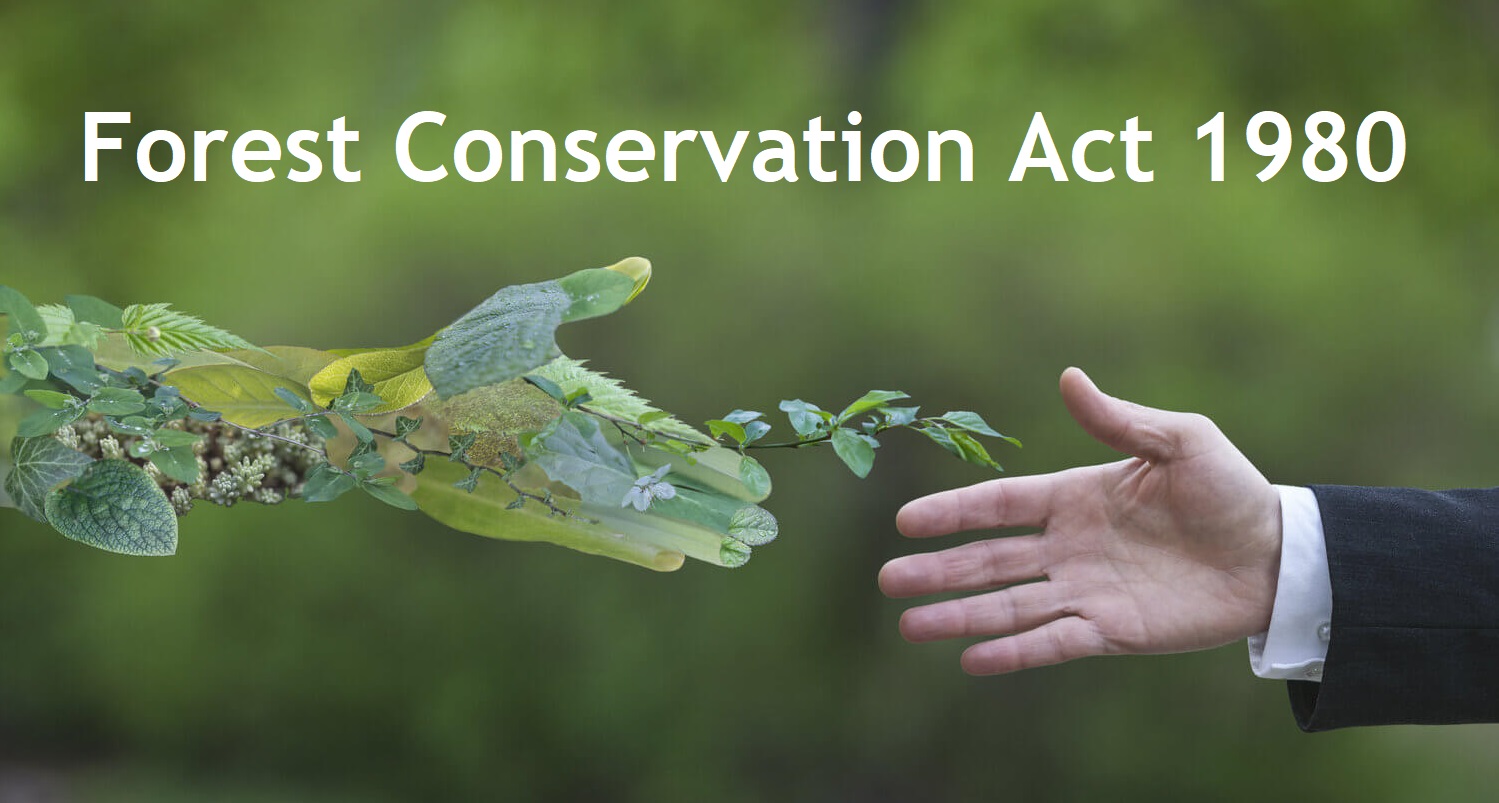Forest Bill Goes To House Unchanged
Context :
The full amendment Bill has received the unanimous support of a parliamentary committee formed to look into the contentious suggested changes to the Forest (Conservation) Act, of 1980.
What is Forest (Conservation) Act 1980?
- The act’s goals are to preserve and safeguard India’s forests and control the use of forest areas for non-forest activities.
- Applicability: The act applies to the entire nation of India.
- Definitions (Section 2): The legislation defines keywords including “forest,” “non-forest purpose,” “forest land,” and “diversion.”
- Forest Land Diversion (Section 3):
- Prior Approval: The legislation stipulates that, except for certain exemptions, the central government must first give its consent before diverting forest land for non-forest uses’
- Proposal Submission: Guidelines for submitting plans for diversion are given, along with information on the amount of forest land that will be diverted, compensatory afforestation, and the intended use of the diversion.
- Consideration Factors: Before approving or rejecting diversion applications, the central government takes into account several considerations, including the availability of non-forest land alternatives, the ecological impact, and the significance of the forest area for animals, residents, or tribal members.
- Public Hearing: In some circumstances, the act requires holding a public hearing before deciding whether to accept or reject diversion proposals.
- Rules and Regulations (Section 4): Central Government Power: The act gives the central government the authority to create regulations to carry out its provisions.
- Rule-making Authority: The rules may specify how to submit and review diversion plans, collect fees, and handle other administrative issues.
- Infractions and Punishments (Section 5):
- Anyone who violates the terms of the act or its regulations will be held accountable for their actions.
- Penalties for breaking the law or its norms are specified in the act as imprisonment and/or a fine.
Has the FCA ever been amended?
- The FCA has undergone at least two significant revisions, in 1988 and 1996.
- Before 1996:
- The Forest Conservation Act (FCA) only applies to forests that had been declared under the Indian Forest Act of 1927 or any other local law.
- Additionally, it encompassed forests that were under the Forest Department’s management or supervision.
- Supreme Court Decision from 1996:
- In response to a suit submitted by Godavarman Thirumulpad, the Supreme Court broadened the meaning of “forest” in India.
- The types of areas included in the extended definition were as follows: a. Any area that is listed as “forest” in a government document, regardless of ownership, acknowledgement, or classification. b. Locations that fit the “dictionary” definition of a “forest.” c. Locations designated as “forests” by a committee of experts assembled by the Supreme Court under its 1996 order.
- The Expanded Definition’s Consequences:
- Net Present Value (NPV) calculation: The more inclusive definition made it possible to determine the economic worth of the forest area being destroyed for development. The NPV was demanded from project backers as compensation for the depletion of forest resources.
- Compensation Fund: A compensating afforestation fund was established to lessen the impact of the loss of forests. The initiative aims to provide funding for reforestation or afforestation efforts in other regions.
- Provision of Non-Forestry Land: Under the broadened definition, compensation in the form of non-forestry land might be given when forest land was diverted for non-forest uses.
- The expanded definition’s goals are:
- Strengthen Forest Conservation: By encompassing a larger range of lands as “forest,” the extended definition sought to support India’s efforts to save its forests.
- Environmental Impact Assessment: The broadened definition made sure that the effects of development projects including forests on the environment were properly evaluated and that appropriate mitigation steps were adopted.
- Preservation of Forest Resources: The extended definition aims to conserve and safeguard forest resources by determining the economic worth of forests and putting in place corrective actions.
Why is the FCA again being amended?
- The Forest (Conservation) Act, of 1980, which was created to stop the unauthorised use of forest land for non-forestry uses, is intended to be changed by the proposed modifications.
- The Act applies to land that is not formally designated as “forest” in government records and gives the federal government the authority to demand compensation for forest land diverted for non-forestry uses.
What are the features in the bill that is going to be amended?
- Property covered by the Act:
- The Indian Forest Act of 1927 or any other law that declares or notifies land as a forest is covered by the Act. (ii) Land that is not included in the first category but was noted as a forest in a government record on or after October 25, 1980.
- The requirements of the Act do not apply to land that was converted from forest use to non-forest use on or before December 12, 1996, by any authorised state or union territory (UT) authority.
- Exempted categories of land:
- Some forest land categories are exempt from the Act, such as (i) Forest land adjacent to a government-maintained public road or rail line that provides access to a residence or a rail, up to a maximum size of 0.10 hectare. (ii) Land for the building of a strategic linear project of national significance and national security that is located within 100 km of international borders, the Line of Control, or the Line of Actual Control. (iii) Up to 10 hectares of land for security-related infrastructure development. (iv) Land up to five hectares in size that are planned to be used for defence-related projects, paramilitary force camps, or public utility projects in an area where left-wing extremism is a problem.
- These exemptions are subject to conditions laid out in guidelines issued by the central government.
- Assignment/Leasing Of Forest Land:
- A state government must obtain prior clearance from the federal government before leasing or assigning any forest area to an organisation that is not owned or under its control.
- The Bill extends this responsibility to all organisations, including those that the government owns and controls.
- The central government’s rules and conditions must be met for the prior approval to be granted.
- Permitting Activities:
- Activities that are permitted on forest land are limited by the Act, which prohibits the de-reservation of forests and the use of forest land for non-forest uses.
- With prior central government consent, restrictions on the use of forest land for non-forest activities may be waived.
- Any use of land other than reforestation, such as growing horticulture crops, falls under the category of non-forest purposes.
- The Act lists some actions that are not considered non-forest uses, such as installing checkpoints, fire lines, fencing, and wireless communication for the development, management, and conservation of forests and wildlife.
- The Bill includes zoos and safaris run by the government or any authority under the Wild Life (Protection) Act of 1972 in forests that are not protected areas, as well as ecotourism facilities, silvicultural operations (encouraging forest growth), and any other activity that the central government specifies.
- The federal government may additionally lay forth circumstances under which some surveys (such as seismic surveys and exploratory activities) are not considered to be conducted for non-forest objectives.
- The power to give instructions:
- The Bill gives the federal government the ability to direct any authority or organisation that is part of or acknowledged by the federal government, a state government, or a union territory (UT) to carry out the Act.





